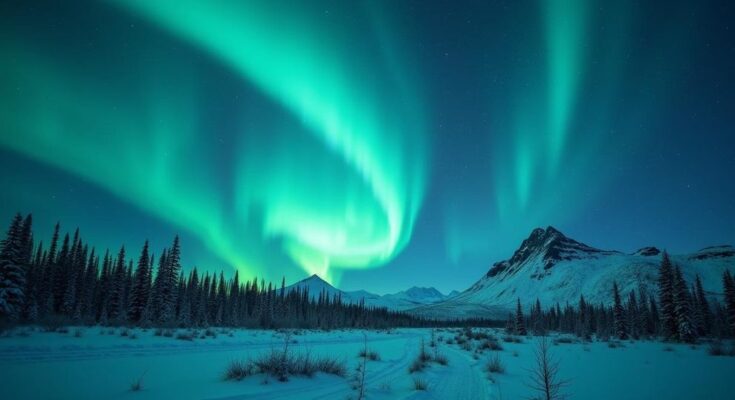A severe solar storm on Thursday night resulted in breathtaking auroras seen in unusual locations across the globe, including New York, Washington, D.C., and as far south as Texas. This event followed another powerful geomagnetic storm earlier in May and was caused by a coronal mass ejection from the sun. As this solar activity disrupts Earth’s magnetic fields, it provides an opportunity for many observers to witness the northern lights.
On Thursday night, Earth witnessed an extraordinary display of auroras, characterized by vibrant hues of purple, red, and green, as a severe solar storm graced numerous regions around the globe. The northern lights, commonly seen near the polar regions, expanded their reach unusually far south, appearing in cities such as New York and Washington, D.C., and extending to as far south as Texas. This particular event marks the second intense geomagnetic storm recorded this year. The first, which occurred on May 10 and 11, was even more potent and categorized as ‘extreme’, receiving a rating of 5 out of 5. It was deemed one of the most remarkable storms in decades, and perhaps centuries, resulting in the visibility of auroras across various places including Australia, North America, Central America, South America, southern Africa, and central Europe. The geomagnetic storm was generated by a coronal mass ejection (CME), which ejected solar particles and energy from the sun, causing a temporary disruption to Earth’s magnetic shield. This rapid surge of solar particles, traveling at an impressive speed of nearly 1.5 million miles per hour, impacted Earth and made its way along our planet’s magnetic field lines to the upper atmosphere. As these particles interacted with nitrogen and oxygen molecules, they released varying colors of light, known as the aurora. Notably, red auroras tend to appear more frequently at lower latitudes, as the red light emanates from higher altitudes. The atmospheric spectacle first graced Europe on Thursday, illuminating the skies of London and extending into southern France. Despite initial concerns from aurora enthusiasts about the longevity of the display, the auroras persisted into the evening, enchanting observers across the United States from coast to coast. Particularly, locations that missed the northern lights in May, including Washington, D.C., were rewarded with this rare celestial event. In the D.C. area, the auroras could be viewed with the naked eye between approximately 7:10 and 7:25 p.m., after which they remained visible through sensitive camera lenses for the remainder of the night. These remarkable geomagnetic storms coincided with the peak of the 11-year solar cycle, a period during which such solar outbursts are most likely to occur. Experts assert that additional opportunities for observing the northern lights are forthcoming in the near future. Bob Leamon, a solar physicist at the University of Maryland Baltimore County and NASA, noted, “The next three or four years, we should see some fine displays of aurora. It’s like a whole generation of people discovering something for the first time.”
The phenomenon of auroras, including the aurora borealis in the northern hemisphere and aurora australis in the southern hemisphere, primarily occurs at higher latitudes near the poles due to solar activity. Solar storms and coronal mass ejections can cause disturbances in Earth’s magnetic field, allowing solar particles to enter the atmosphere and produce dazzling light displays. The 11-year solar cycle influences the frequency and intensity of these solar storms, and as this cycle approaches its peak, scientists anticipate increased occurrences of auroras that could be visible further south than usual. Events like these are not just visually stunning; they also represent significant interactions between the solar wind and Earth’s magnetic environment.
In summary, the recent severe solar storm has brought stunning auroras to regions far beyond their usual visibility, enchanting viewers across the United States and beyond. As the peak of the solar cycle continues to unfold, scientists predict that additional opportunities for witnessing such spectacular displays will present themselves in the coming years. This phenomenon not only illustrates the beauty of our planet’s natural interactions with solar activity but also offers a unique experience for many who have never observed the northern lights before.
Original Source: www.washingtonpost.com




